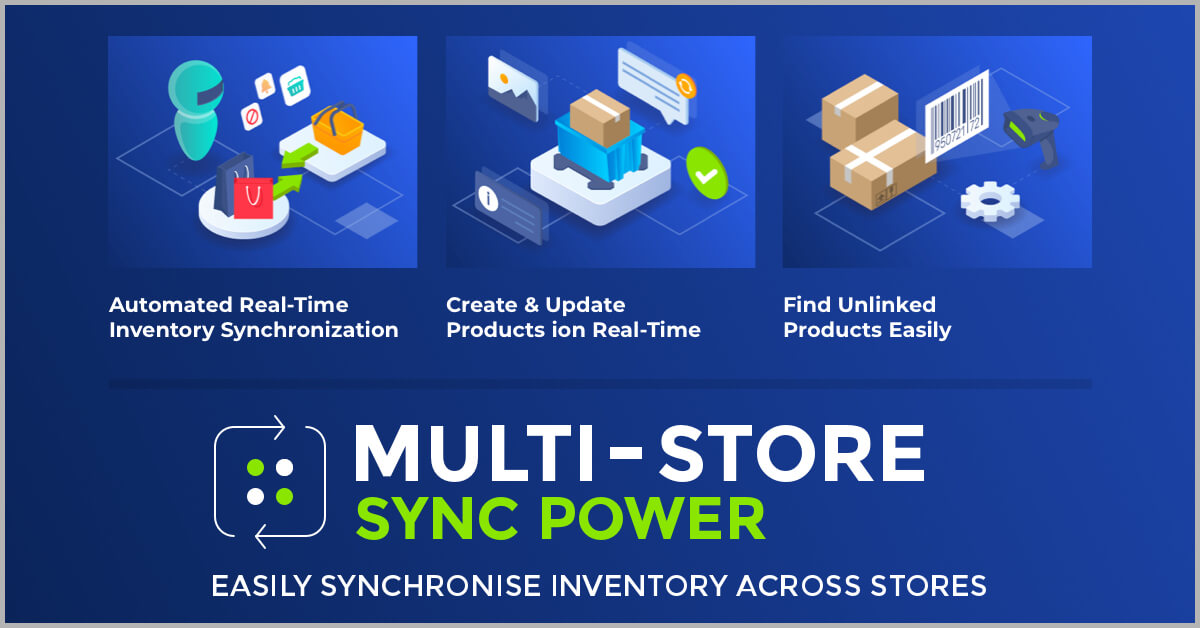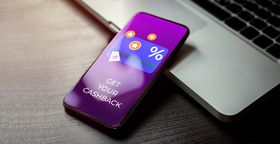Elevate Product Displays: Merchandising Techniques via the Store Inventory System
Unveil the secrets to revolutionize your online store with effective merchandising techniques and inventory management for maximum sales.
Published June 24, 2024.

High shopping cart abandonment rates, affecting 88% of online shoppers, present a significant challenge in e-commerce. In the competitive online marketplace, standing out demands expertise in online merchandising techniques. These strategies not only showcase products enticingly but also boost sales by elevating the retail experience.
Effective merchandising, coupled with inventory management, is essential for capturing and retaining consumer interest and ensuring that more shopping carts make it to checkout.
Meet the Expert
Courtney Sharp is the co-founder and owner of Sharp Media Agency which specializes in Shopify development, eCommerce, digital marketing, and brand development. She has a master’s degree in applied digital media and a strong background in digital strategy.
Merchandising Techniques and Strategies
Smart merchandising techniques can help you create a more dynamic and engaging customer shopping experience. Try the following strategies:
1. Merchandise Your Catalogs
- Keep it fresh: Regularly update your catalogs with new arrivals and featured products and strategically position slow-moving items to grab attention.
- Visual appeal: High-quality visuals are essential for e-commerce merchandising. Invest in professional product photography to feature high-quality optimized images. Varied layouts will keep your customers' browsing experience interesting.
- Categorization: Group similar products and create themed collections and categories to help customers easily navigate your store and find products.
» Can't find your catalog IDs? Here's how
2. Leverage the Power of Merchandising Automation
For businesses managing a large inventory, merchandising automation (like smart collections) can be a significant value enhancer. These tools allow you to automate tasks like:
- Product management and placement
- Personalized recommendations
- Dynamic pricing strategies
This frees up your time to focus on other aspects of your business while ensuring your merchandising remains smart and data-driven.
Shopify merchandising offers a robust set of automation features that can help you personalize product recommendations, showcase best-sellers, and optimize product placement based on customer behavior.
3. Use Scarcity and Urgency Tactics
- Product page alerts: Use alerts like “limited stock,” “selling fast,” or “X sold in the last hour” to create a sense of urgency.
- Cart-level messages: Inform customers that items are reserved for a limited time, as this will encourage them to make quicker decisions.
- Checkout and abandoned cart: Use urgency-driven language to encourage immediate purchases. For example, “last chance to buy” or “selling out soon”.
Did you know?
Shopify's “Store Rocket” and Klaviyo for CMS can be incredibly useful for implementing these strategies effectively. The key is understanding your customer's journey and preferences and tailoring your strategies accordingly.
» Interested in artificial intelligence? Here's how to use AI to build a Shopify store
Integrating Your Store's Inventory
Integrating your inventory system is all about using info to sharpen your merchandising game. It’s a smart way to keep your store lively and your customers happy.
Real-Time Inventory Syncing
This is a must if you deal with a wide range of products. It's less crucial for smaller catalogs, but still a smart move. We're talking more than just keeping tabs on stock. Expect a nice bump in your conversion rates and average order value (AOV).
Using Inventory Data Wisely
You can easily showcase products that are ready to fly off the shelves when you know exactly what you have in stock. Keep your product displays fresh by adapting to the latest stock info—your customers will love the dynamic shopping experience.
Additionally, you must enable inventory tracking to hide out-of-stock products from your collections.
Pro Tip: Try adding "restock notifications" for products/sizes that are out of stock. It's a simple trick that keeps your customers engaged and coming back.
» Discover the 3 best inventory management systems for your Shopify store
The Role of Shopify and E-Commerce in Modern Merchandising Techniques
The implementation of advanced e-commerce merchandising techniques in a retailer's strategy significantly impacts the effectiveness of product displays.
- Online merchandising techniques: Shopify provides a range of online merchandising techniques, including product descriptions, images, reviews, and more, to attract, engage, and convert customers from anywhere.
- User-friendly interface: Shopify's user-friendly interface makes it easy for businesses to set up their online stores and manage their inventory effectively.
- E-commerce integration: Shopify seamlessly integrates with various e-commerce platforms, expanding a retailer's reach and improving their online presence.
- Customizability: Shopify’s customizable features allow retailers to adapt their e-commerce site to their brand image and customer preferences.
Note: Utilizing Shopify's inventory and merchandising capabilities allows retailers to efficiently organize their merchandise. Additionally, these features support the adoption of smart merchandising principles, enhancing the shopping experience for consumers by managing your bestsellers.
Personalization and Targeted Merchandising With Upsell and Cross-Sell
Personalization is a must for elevating retail merchandising. It's a great way to create a tailor-made shopping experience for each customer:
- Product page optimization: Suggest complementary items or upgrades on each product page. Use algorithms to recommend products based on your customers' behavior.
- Cart and checkout: This is the best time to include suggestions for add-ons or more premium products, as your customers are already in a buying mindset. You can also maintain transparency with checkout disclaimers.
- CMS systems: Use your content management system (CMS) to link product catalogs for better cross-sell and upsell opportunities.
- Email and SMS marketing: Send personalized recommendations to your customers based on their past purchases or browsing behavior.
AI Systems
Work best with large product catalogs. They analyze your website data and customer browsing history/site activity to recommend the products most likely to sell well with certain products.
Manual Settings
These work better for smaller catalogs with high-value items. Manually link related product categories (like dresses to accessories) or specific complementary products (like headphones to cases).
» Find out how properly organized collections can help you sell more and increase your Return on Investment (ROI)
A Real Success Story
Optimization and Data-Driven Decisions
You can enhance how well your product displays work by making the most of your data and consistently trying different approaches. Here’s how:
Track Essential Data for Optimization
If you want to understand customer behavior and optimize your product displays accordingly, try to keep an eye on:
- CTR
- AOV
- Customer drop-off rates
- Sales trends
Use A/B Testing to Adapt and Improve with Data
As mentioned previously, it’s important to continually review your cross-sell and upsell strategy. Most apps offer in-depth reports, so monitoring and analyzing the data within them will give you a glimpse into opportunities for optimizing your sales via these features.
» Still struggling? Make sure you know the difference between visitors and sessions
Case Study: Success Through A/B Testing
Experimenting with product page recommendations: For our fashion retail client carrying multiple brands, we initially used AI to recommend similar styles across all brands on product pages.
Shifting to brand-specific recommendations: We switched tactics, focusing on recommendations within the same brand as the viewed product.
Results: This strategy led to higher CTR and a noticeable uptick in sales, showcasing the effectiveness of targeted, data-driven merchandising.
» Discover the benefits of using dummy data for your Shopify store
Challenges With Stock Levels in E-Commerce Merchandising
Product recommendations don’t often consider stock levels, which can lead to difficulties in managing your out-of-stock products. This means your customers might see products with only 1-2 quantities left. It would be more effective to recommend products with a larger merchandise inventory as this helps move stock more efficiently.
Some apps have the ability to set the minimum stock level value for products they recommend, but some don’t. So, contact app sales teams when considering using an app and ask about this feature.
It would be even better if you could specify certain quantities required on the variant level (for example, a complete size range).
Solving Issues with Stock Levels
Depending on the size and revenue of your business and product catalog, it's super helpful to have an internal person or team responsible for monitoring and analyzing the data around inventory and feeding this to the buying team.
What Is the Future of E-Commerce Merchandising?
Embracing these future trends will keep your e-commerce businesses ahead of the curve and help you make the most of every opportunity to engage customers and boost sales. Here's what the experts say you should look out for:
Personalization Is Key
The future is all about ramping up personalization. Think advanced software that tailors product recommendations based on a user's real-time browsing data. While still emerging, this technique promises to revolutionize how customers interact with online stores.
Build a Dedicated Team
Get someone or a team on board who's focused solely on integrating store inventory with merchandising strategies and automating the entire process for maximum efficiency.
Stay Data-Driven
A huge chunk of potential sales (20-30%) can slip through the cracks if you're not on top of your product and catalog data. So, investing in this area isn't just smart—it's essential.


